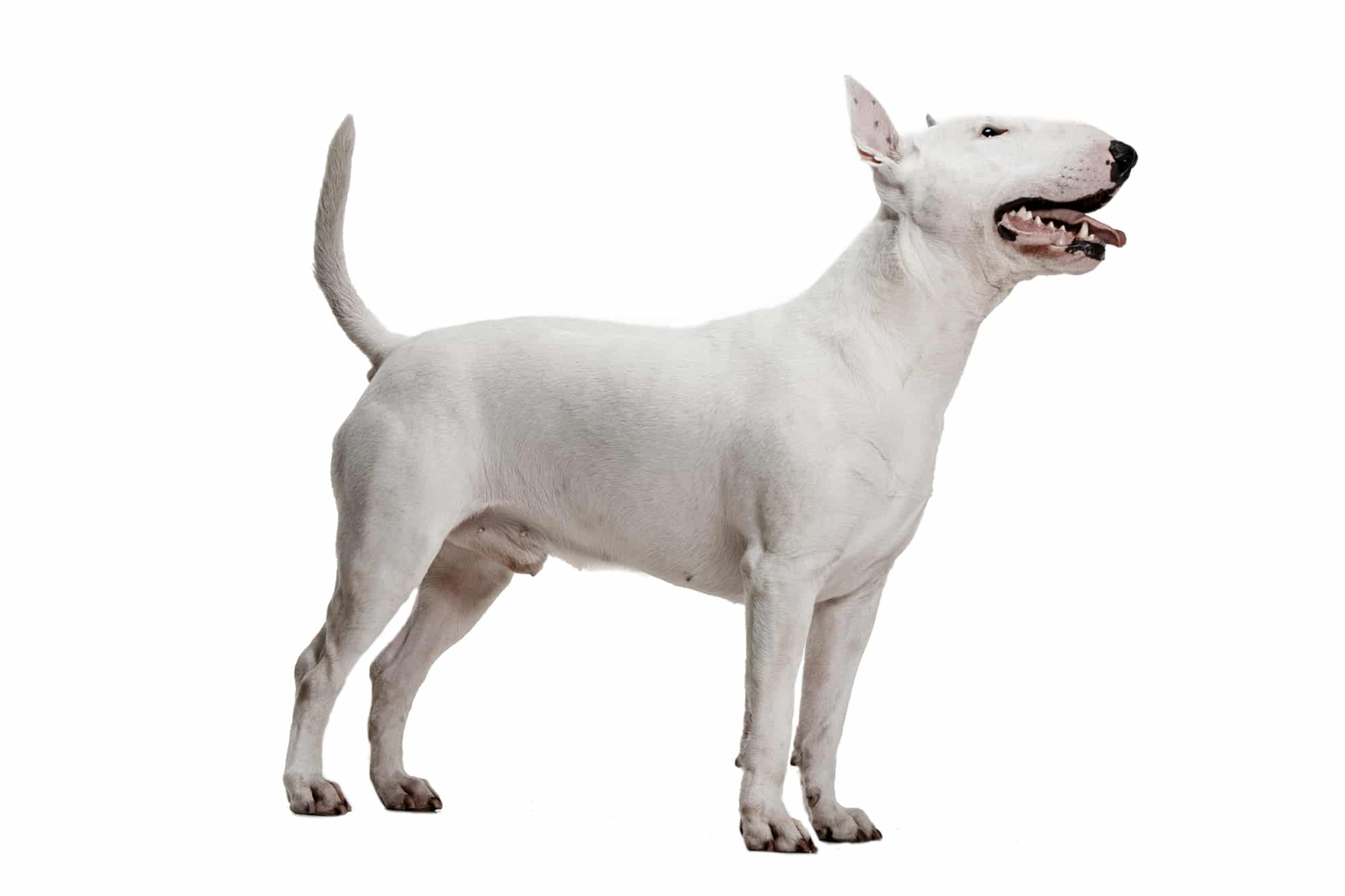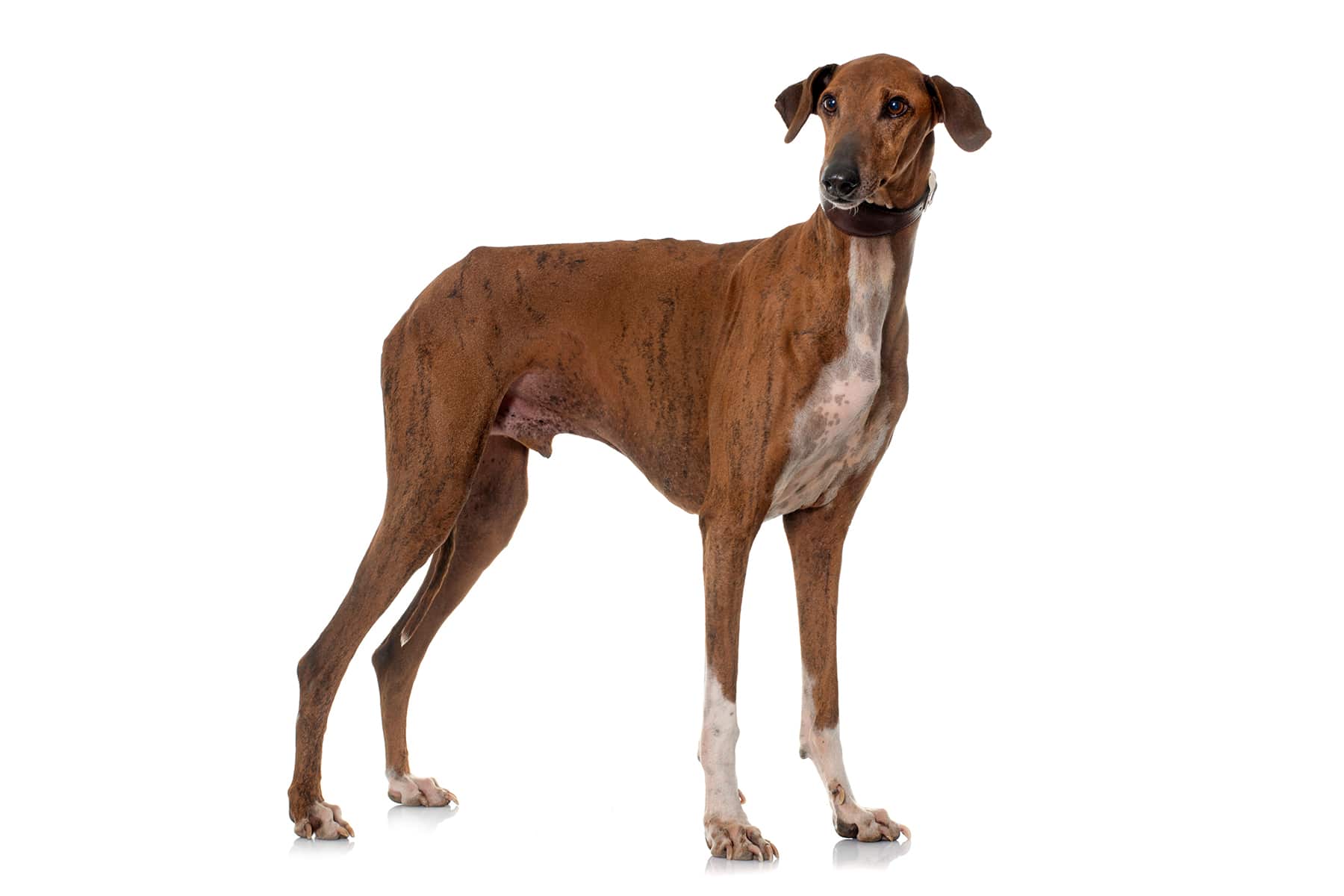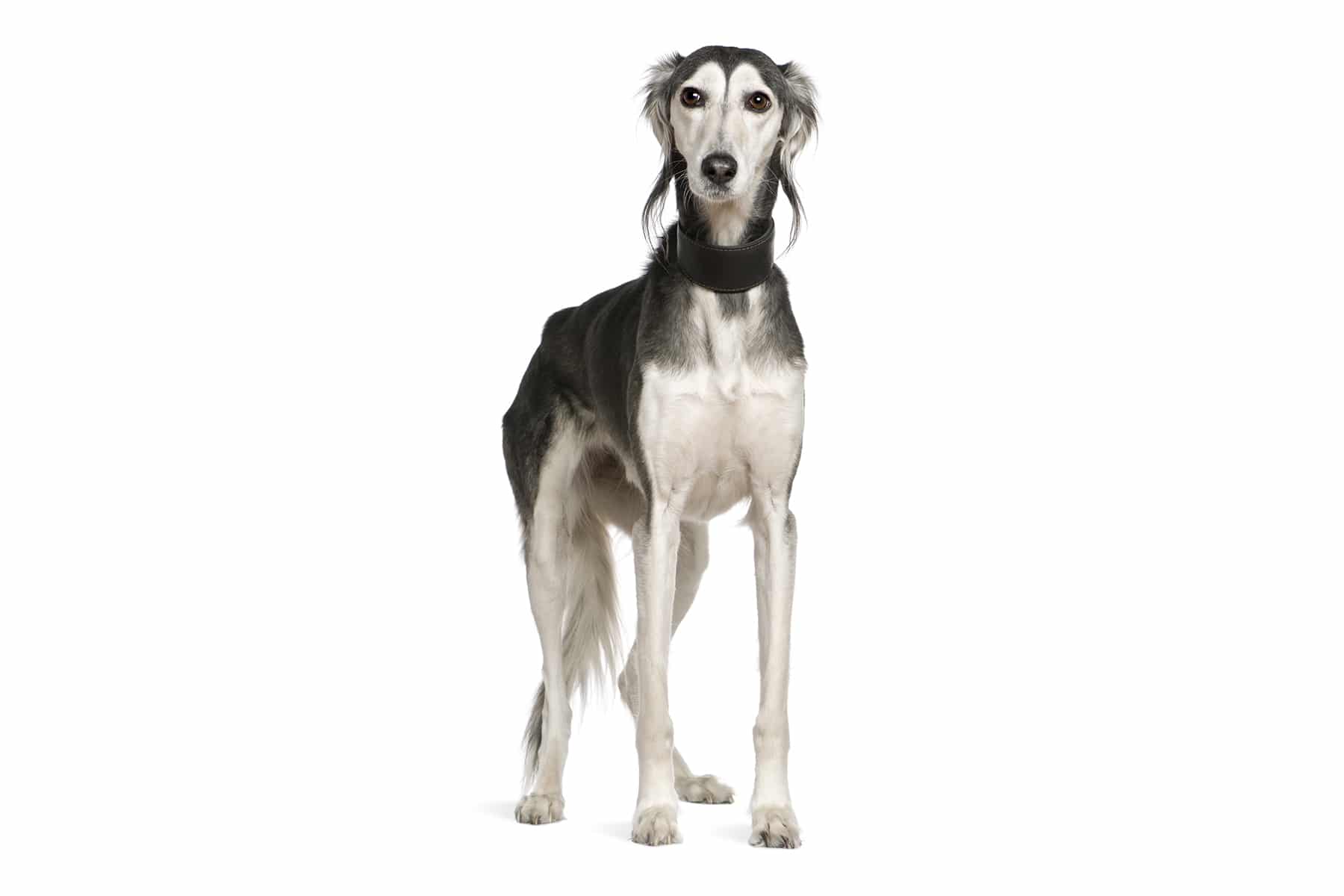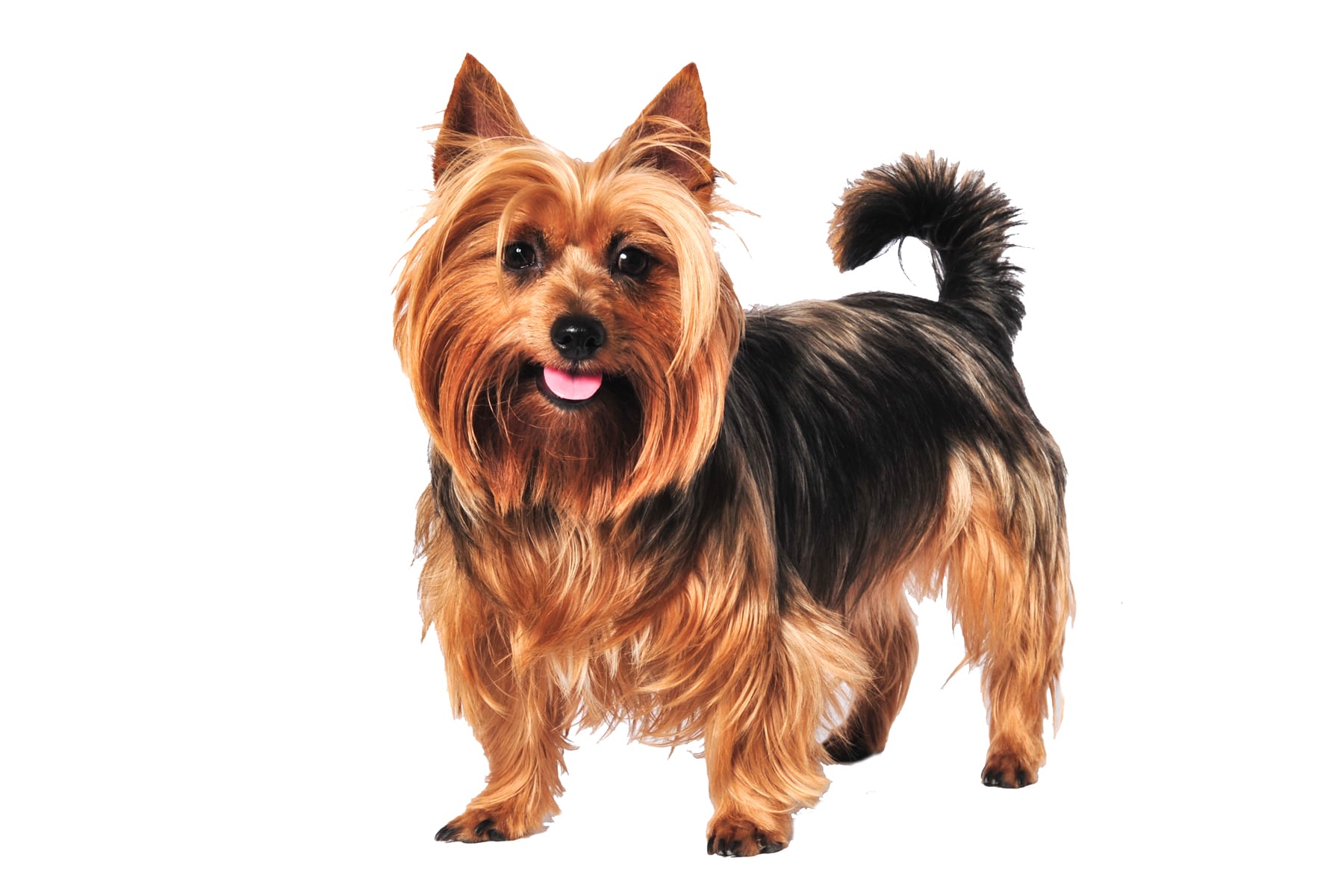Irish Terrier
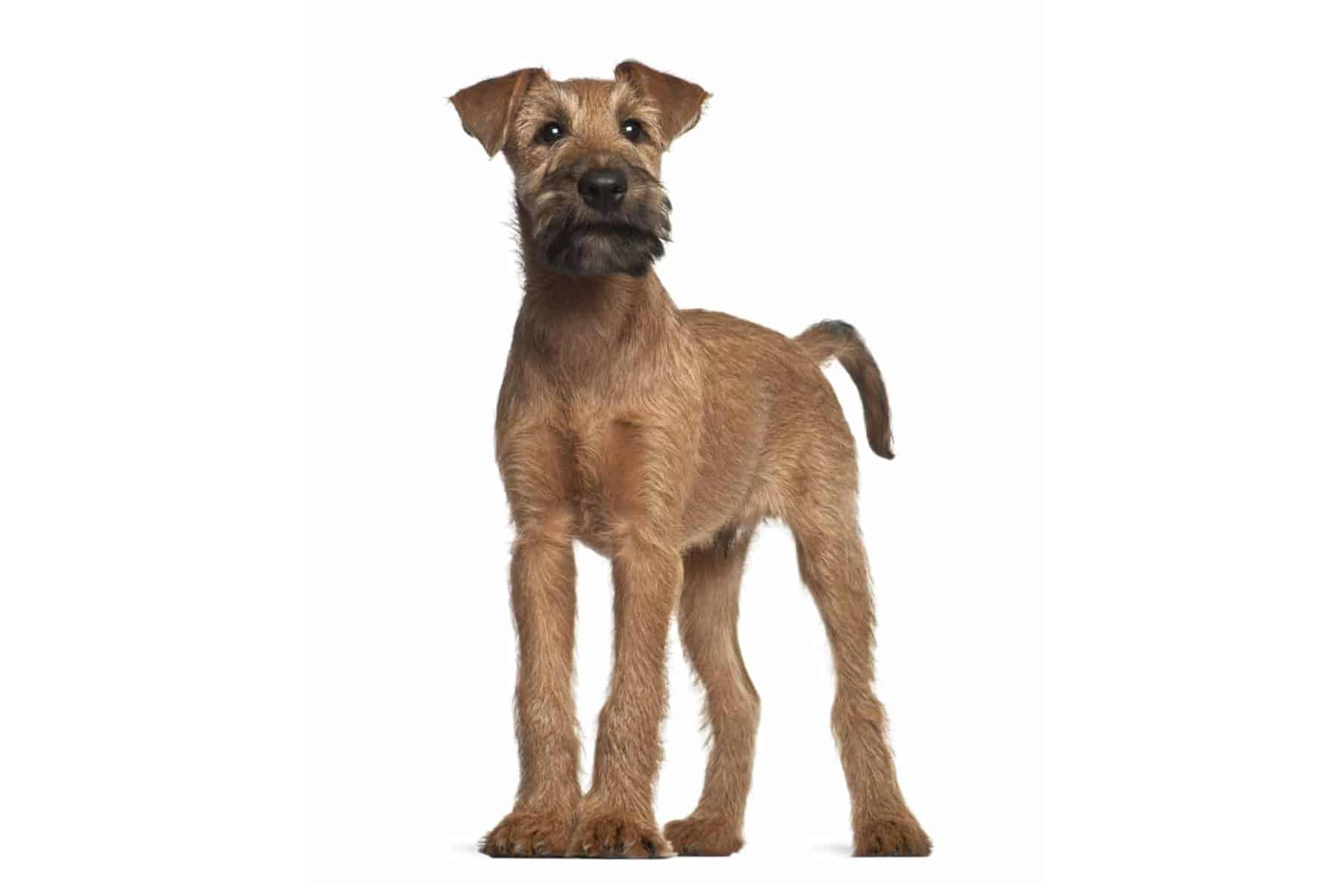
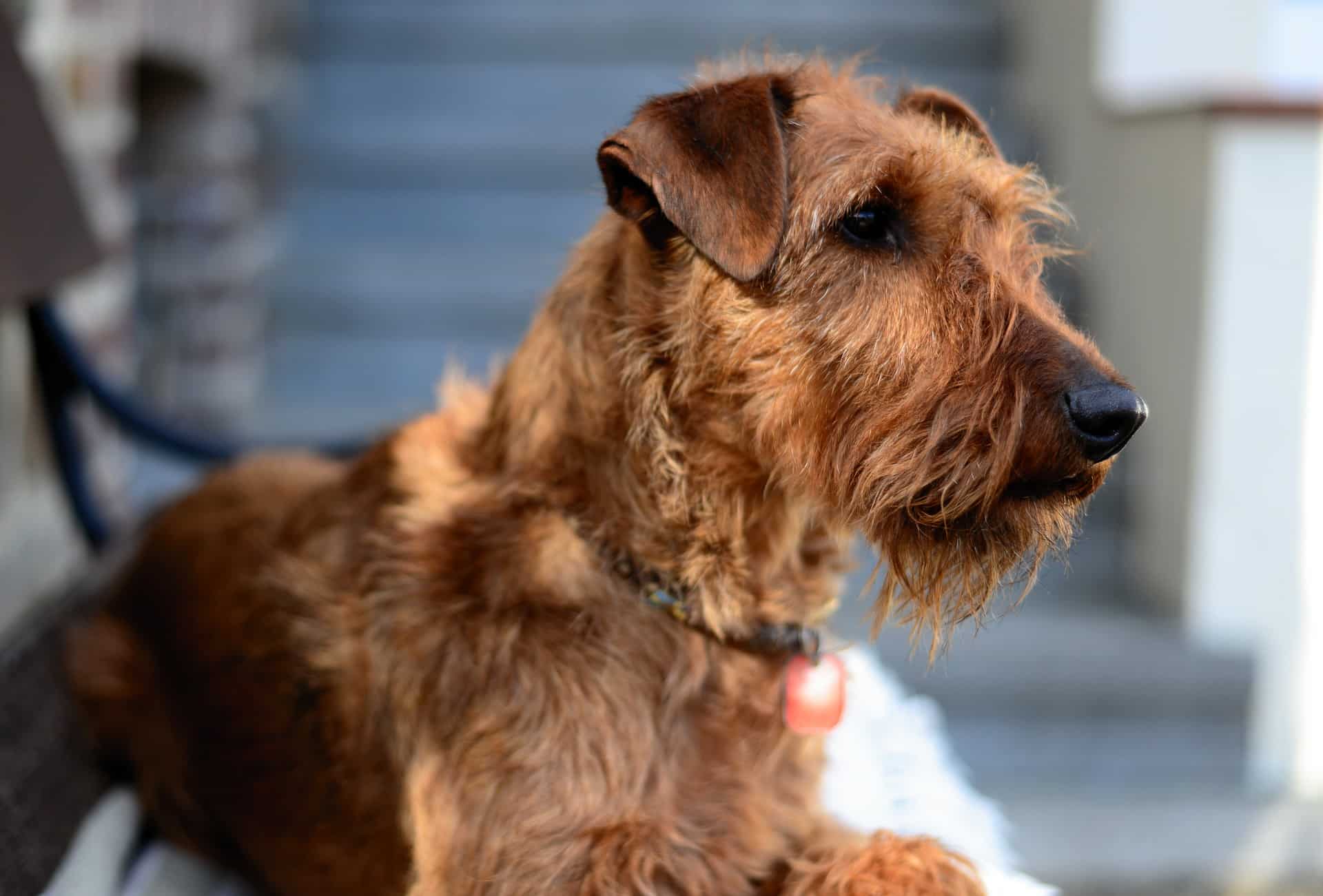
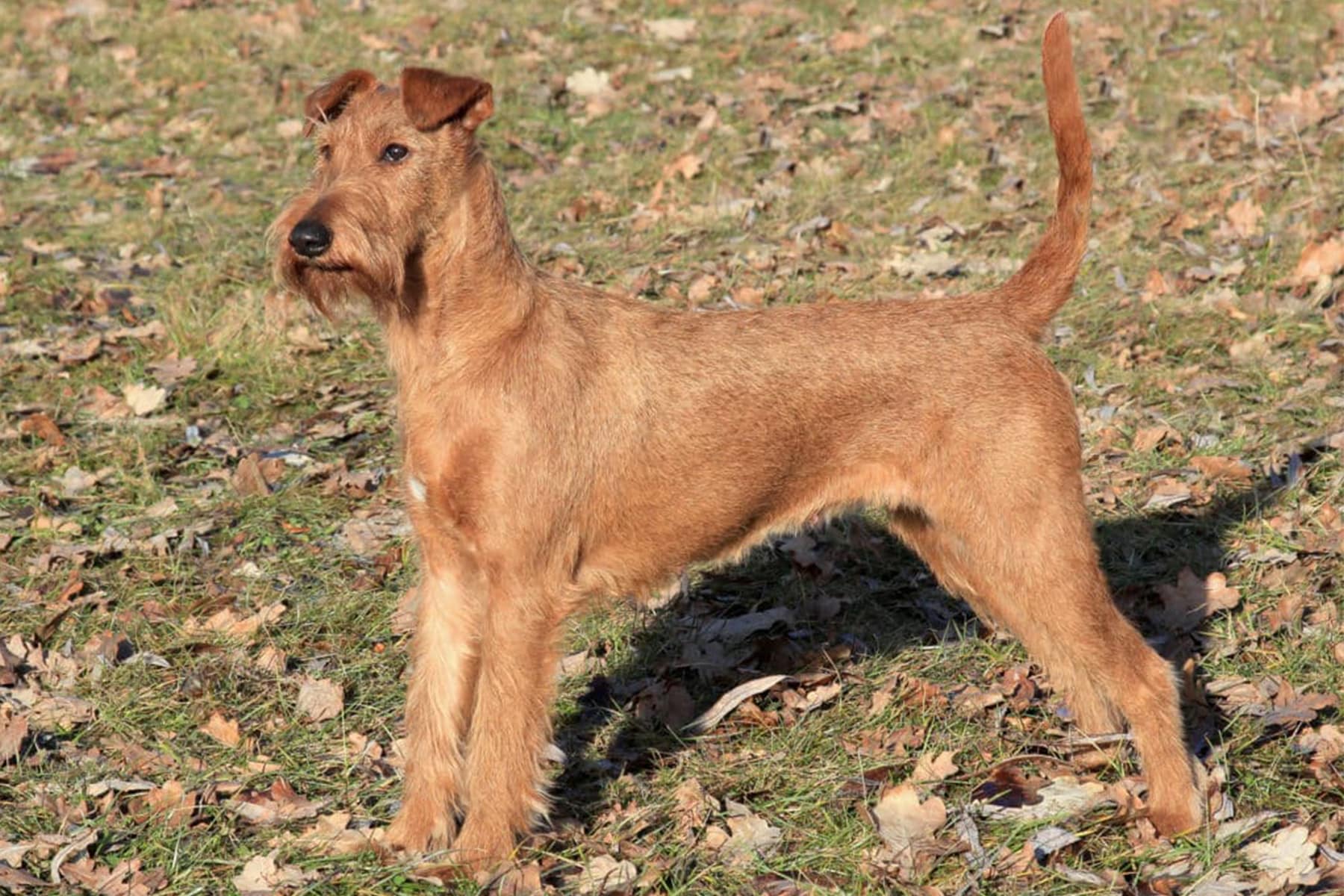
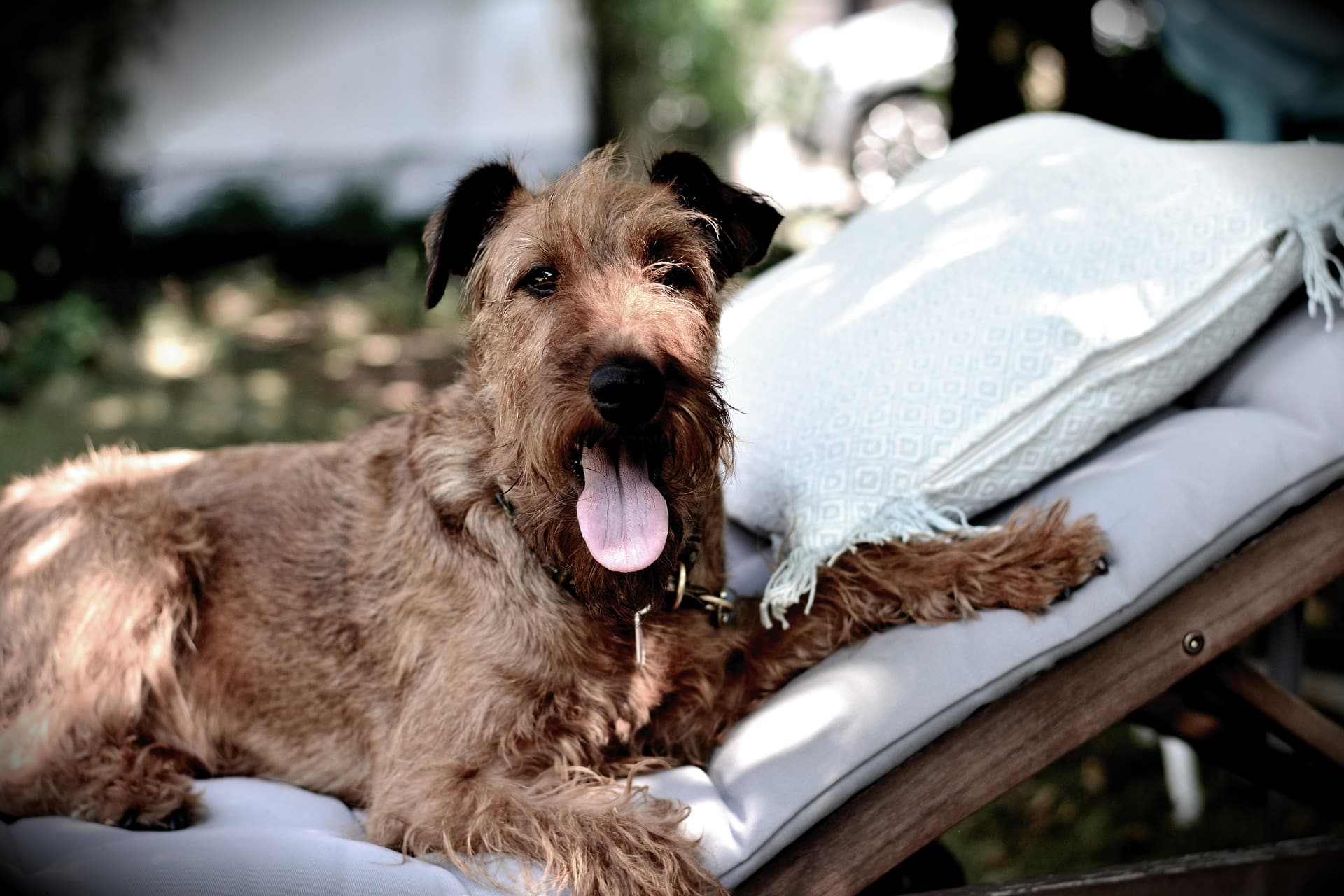
Temperament:
The Irish Terrier is both a bully and a cuddly dog. The spirited dog is the devil among English terriers. Jack London describes the dog's character as "made of gold - inside and out".
Characteristics
The long-legged Irish Terrier has a muscular, wiry body. The head is narrow with small, dark eyes. The V-shaped ears tilt forward to the cheeks. The energetic facial expression is emphasized by a long moustache. The high-set tail is carried steeply upwards.
This spirited dog has a strong sense of territory. It often does not get on well with other dogs. Due to its rough character, the Irish Terrier is ideal as a guard dog. The dog is a passionate hunter. Its pronounced hunting instinct must always be taken into account on walks.
The Irish Terrier is very reserved and mistrustful towards strangers. The dog is very attached to its owner. It is a loyal companion. It goes through thick and thin with its owner. Despite his rough edges, he is a friend for life. He loves cozy hours at home just as much as long walks. He is friendly and calm with children.
The Irish Terrier is not a dog for beginners. He is stubborn and always questions his owner's leadership. He also has an innate keenness. Training must be consistent and without giving in.
As his hunting instinct is very pronounced, he can rarely be let off the lead. He tends to interpret the term "prey" very generously. Anything that moves is considered a potential hunting trophy.
Even as a puppy, the Irish Terrier must be well socialized. Training should only be carried out by trainers with sufficient terrier experience. Hunting training is ideal.
An intelligent dog not only needs a lot of exercise. He also needs to be sufficiently challenged mentally. They particularly enjoy dog sports such as agility or maintrailing. This dog breed is not suitable for cozy couch potatoes.
The robust dog has always remained an outdoorsman. Nevertheless, today the breed is also trimmed for beauty at dog shows. This is why it should be accustomed to regular grooming from puppyhood.
The Irish Terrier is also used as a guard dog due to its pronounced guarding instinct. If he is attacked, he fights bravely to the end. Giving up is out of the question for him. The dog does not avoid any confrontation. Nevertheless, it cannot be classified as overly aggressive. He also behaves completely disrespectfully towards larger and stronger dogs. He wants to be the boss everywhere.
Coat care:
Shedding:
Energy level:
Trainability:
Children suitable:
The right food
Irish Terriers often suffer from cystinuria. Concrements are deposited in the renal pelvis, bladder and ureters.
Therefore, when choosing food, make sure that it contains high-quality ingredients, is balanced and meets your dog's requirements. Age, size or weight, activity and health status play an important role here. You should follow the manufacturer's recommendations for the amount of food.
Treats should only be fed in moderation and deducted from the basic diet to avoid obesity.
Puppies can be fed 4-6 times a day. The number of meals should be gradually reduced to 2 per day until the dog is fully grown. A rest period should be observed after meals.
Fresh drinking water should be available at all times.
Health & Care
The Irish Terrier is very easy to care for. The rough coat needs to be cut and brushed regularly. Dead hair is removed by plucking in the direction of growth. The coat must not be clipped. The color and structure of the coat are changed by clipping. The characteristic appearance is lost. If the Irish Terrier is trimmed regularly, it hardly sheds at all.
Frequent bathing is not necessary. Dirt and dust can be easily brushed out of the rough coat.
Regularly checking the hanging ears helps to detect parasite infestation in good time. Redness and secretions from the external auditory canal indicate an infection. Mild ear cleaning products can be used to clean the ear canal. First clean the outside of the ear. The ear cleaner is then dripped into the ear canal and massaged in. The dirt that has been rinsed out is removed with a soft cloth.
If necessary, the eyes must be cleaned with a special eye cleanser. Incrustations at the inner corner of the eye are removed. The formation of tear ducts is prevented.
In older dogs, the claws are often no longer worn down sufficiently. Claws that are too long prevent the paws from touching the ground correctly. Osteoarthritis of the toe joints develops more quickly. Regular trimming of the claws supports physiological movement.
Regular care of the pads with paw balm protects the dog from injury.
The teeth are mechanically cleaned of plaque when chewing. A toothbrush and toothpaste for dogs can also be used. Regular brushing prevents inflammation of the gums. Teeth remain healthy into old age.
Suitable accessories
If grooming is not carried out in a dog grooming salon, a brush and trimming combs are required. In between, the coat can be groomed with trimming fingers.
A feeding bar with height-adjustable bowls prevents them from eating too quickly. The water bowl should have a capacity of at least 750 ml.
A comfortable resting place offers an ideal retreat. If the dog is older, an orthopaedic dog bed should be used. This can prevent calluses on the elbow joints.
The Irish Terrier can be walked with a collar or chest harness. Chest harnesses relieve pressure on the cervical spine and prevent muscle tension. If the dog accompanies a hunter, a special lead harness and a hunting lead are required.
A walking lead offers more freedom of movement on normal walks.
Food balls and Kongs are particularly suitable for keeping your dog occupied in the home. Intelligence toys also promote your terrier's mental activity.
Other accessories that are part of the basic equipment are: Tick tweezers, claw clippers, mild dog shampoo, toothbrush and toothpaste for dogs, transport box for transportation in the car and a first aid kit. Ask your vet what belongs in the first aid kit.
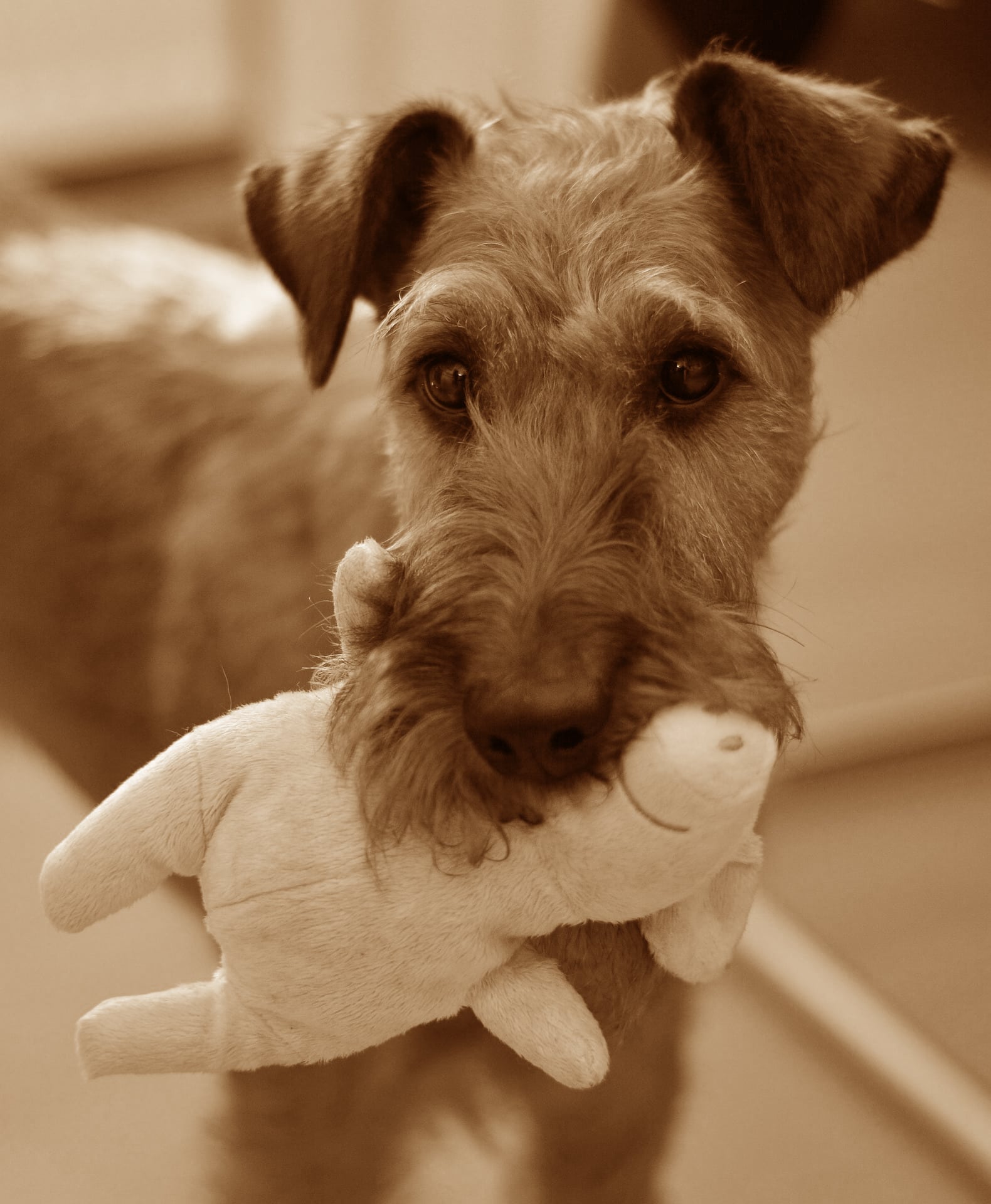
Origin & History
This dog breed is probably the oldest Irish terrier breed. The Irish Terrier was bred directly from the wire-haired Black and Tan Terrier. In the past, the dog was mainly used for par force hunting of foxes. As soon as a fox was hiding in its den, the terrier was sent out.
The fearless dog drove the fox out of its den. However, the Irish Terrier was also used as a farmyard dog. When he was not accompanying his master on the hunt, he had to chase away rats and mice. Protecting livestock was also one of its tasks. As the terrier was fearless in a fight, it was unfortunately also used in dog fights.
In 1847, the breeding of a confident and intelligent terrier began in Ireland. This was the direct ancestor of today's Red Beard. Until 1880, there were many different coat colors. In England and the USA, the red coat color was considered something special.
Dogs with red coats were preferred for breeding. The Irish Terrier was the first terrier breed originating from Ireland to be recognized by the English Kennel Club. Since the beginning of the 20th century, only the red coat color has been recognized as the standard. Brindle terriers are no longer permitted for breeding.
The first Irish Terrier breed club was founded in Dublin in 1879. The first presentation at a dog show took place shortly afterwards in Glasgow. The first breed standard was established in 1881. In 1894, the breed was also represented by a club in Germany.
During the First World War, the Irish Terrier was used by soldiers as a messenger dog in the trenches.
Since 1932, the breed has also been systematically bred in Switzerland.
Today's breeding places more emphasis on beauty. Nevertheless, the breed has retained its originality.
